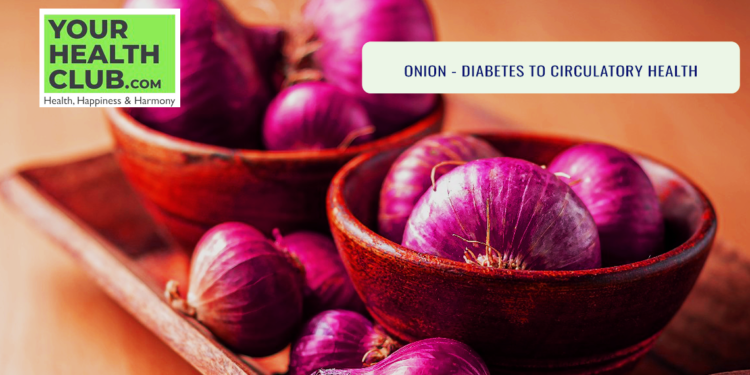Onion – Diabetes
to Circulatory health
As we are all aware, slicing
onions can make us cry. These tears, however, are unable to tame the onion’s
prospective advantages.
Depending on the season in which
it is grown, onions come in a variety of sizes, shapes, and colors. Onion
flavors range from sweet and juicy to harsh and spicy, with a recognizable
aroma.
The most often used ingredient in
Indian cuisine and one of the most grown and eaten veggies worldwide is the
onion. An herb with an underground bulb and a stem, Allium cepa, sometimes
known as onion, is a perennial plant that survives for several years. Members
of the Liliaceae family include onions. The plant’s thin, black seeds are what
are used to make the majority of commercially farmed onions. Onions are highly
valued and kept as pickles because of their flavor and nutritional advantages. Numerous
other names are also used to refer to onions, such as basal, Spanish onion,
tamanegi, Madras oignon, oignon, red globe onion, Zwiebel, yellow Bermuda
onion, piyaj, piyaz, ralu lunu, sibuyas, and loyon.
The earliest vegetable that has
been domesticated is the onion. Anthocyanins, which are present in the cells of
the scale leaves of the bulb, are primarily responsible for the color of red
onions. The onion is a versatile vegetable that can be eaten raw in a salad or
processed into many other foods. There may be a number of possible uses for
onions in human health.
Although there are other sorts
and variations of onions that are cultivated in the wild, the following are the
most frequently used in cooking:
Red onions are flavorful and hot,
and they’re fantastic in salads, soups, gravies, and rice dishes.
Crisp and sweet white onions are
best in pizza, burgers, sandwiches, and salads.
Sweet yellow onions are mild and
sweet; they’re great in soups and stews, and they’re at their finest when
caramelized.
Red, white, and sweet spring
onions are excellent as garnishes.
Leeks are fragrant and delicate
and work well in gravies.
Pearl onions have a sweet flavor
that is ideal for meat gravy dishes.
Shallots are flavorful with a
hint of sweetness, making them ideal for vinaigrettes.
Onion Health Benefits
A food that is low in calories
and sugar yet abundant in vitamins and minerals is raw onion. Heart health,
bone health, skin and hair health, anti-cancer capabilities, and blood sugar
lowering are just a few of the many advantages of raw onions. The antibacterial
qualities of onions help treat bacterial infections. A few benefits of eating
raw onions are as follows:
Good
For Heart
Because of their
anti-inflammatory qualities, onions are helpful in the treatment of heart
disease. Additionally, it has a lot of antioxidants, which support heart
health. These antioxidants, especially the flavonoid antioxidant Quercetin,
lower blood pressure, a major risk factor for heart disease and stroke. In
addition to lowering cholesterol and triglycerides, raw onions enhance blood
flow and reduce the risk of heart disease.
Antioxidant characteristics
Onions have 25 additional potent
antioxidants in addition to flavonoids and anthocyanin due to the presence of
vitamin C. Red onions have a lot of anthocyanin, which gives them their red
color. By preventing or eradicating free radicals, these antioxidants offer a
number of health advantages. Chronic diseases including diabetes, heart
disease, and cancer are brought on by these free radicals.







